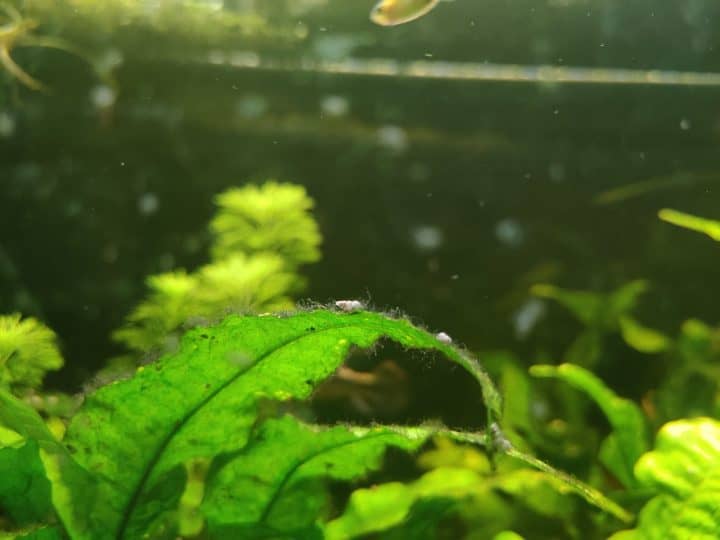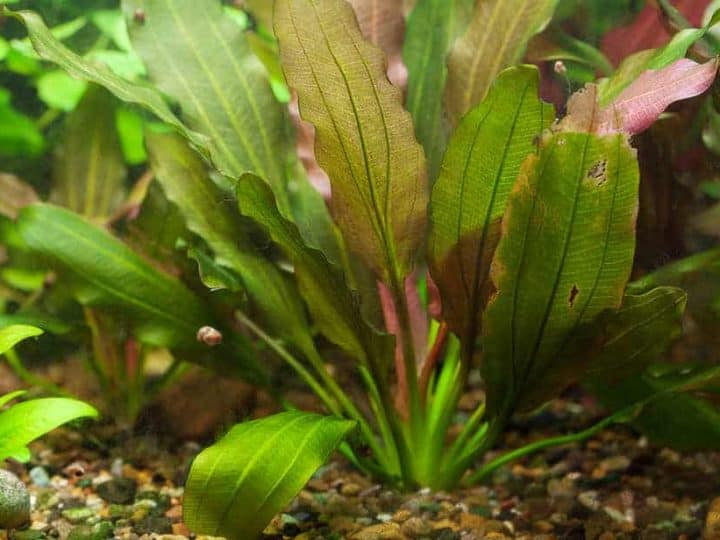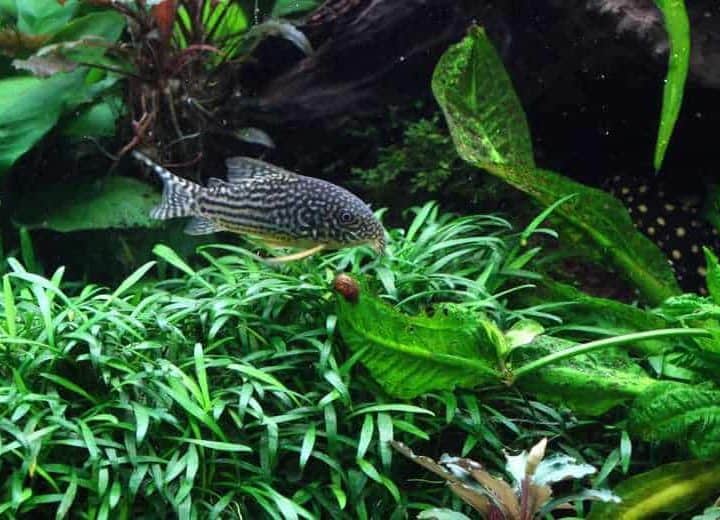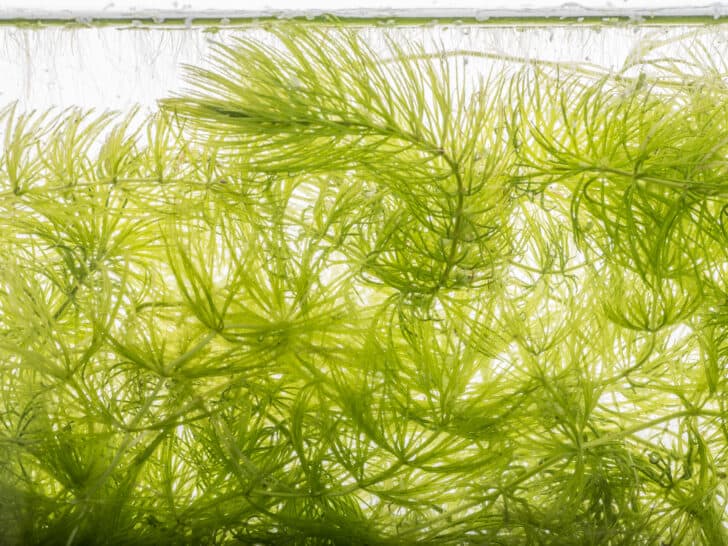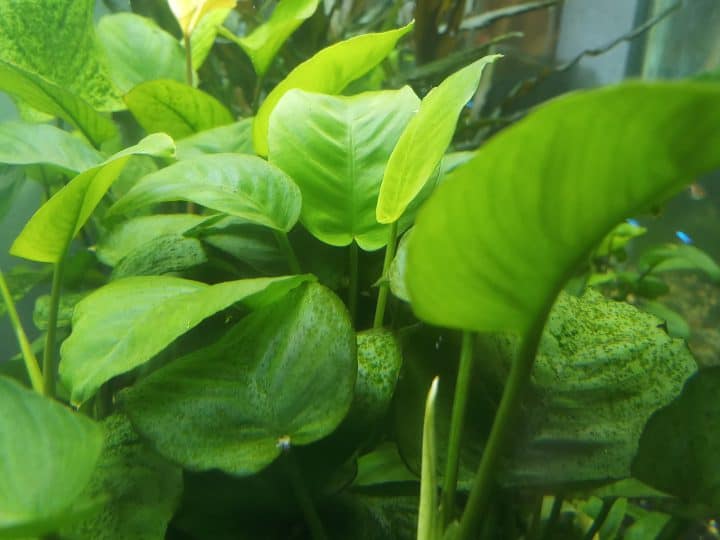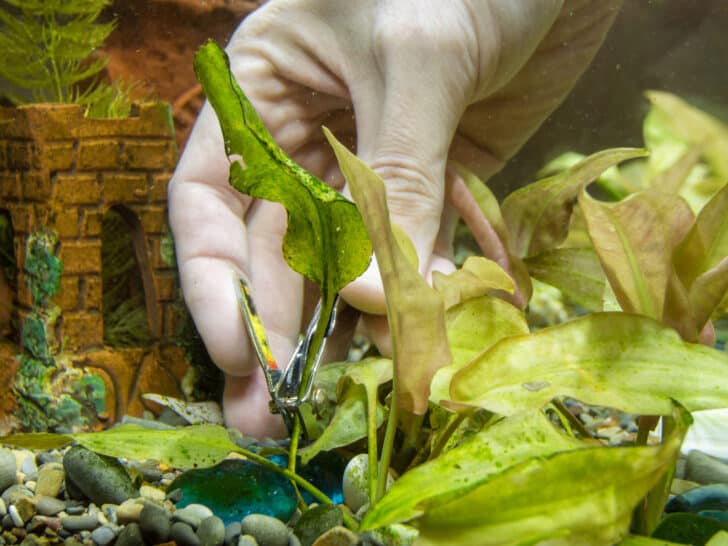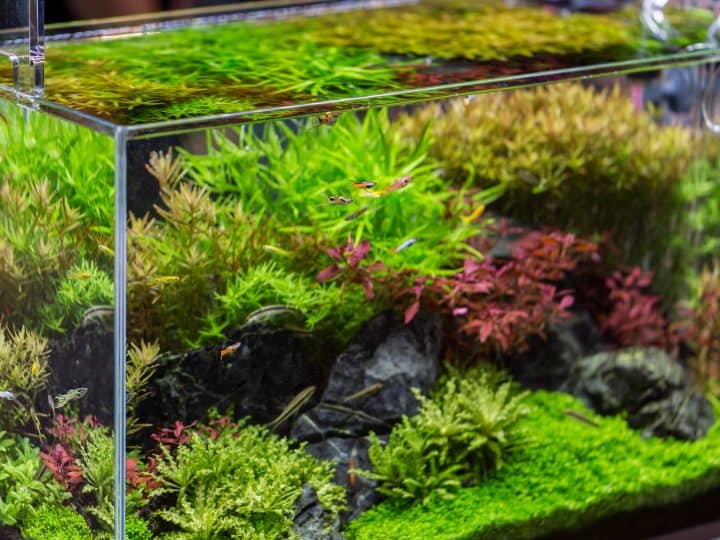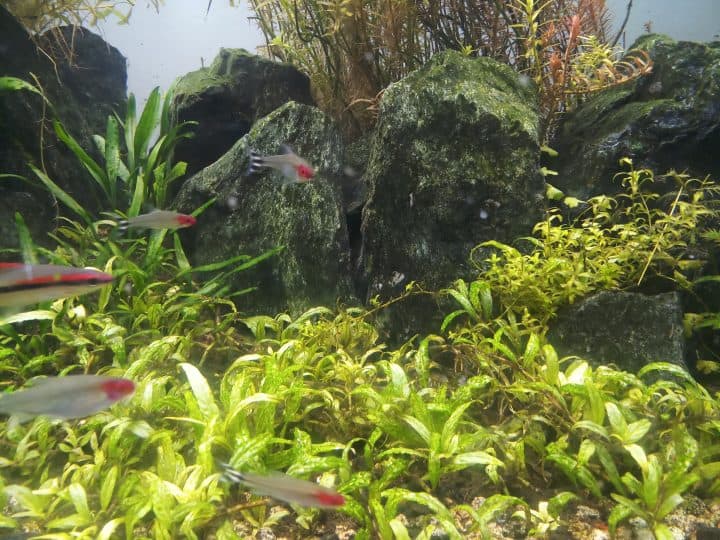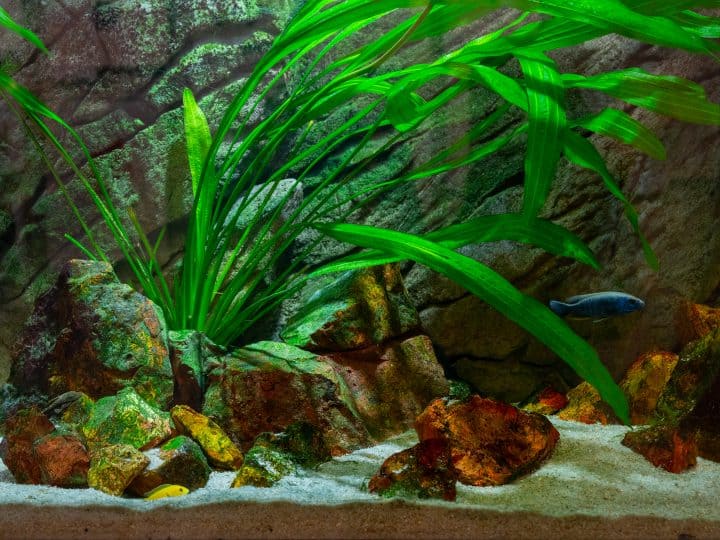Adding live plants to your aquarium is never a bad idea. Greenery is a great way to enhance tank visuals and boost water conditions! Why your aquarium plants are turning brown is what we will address right now.
Quick Answer
Really, there are many potential reasons why your aquarium plants are turning brown. Lighting, water conditions, and other factors play a big role in plant growth. It’s likely that you are doing something wrong with your plant care routine.
In this article, I’ll explain why your plant is turning brown. Knowing how your plant got this way will help you get your plant looking green, healthy, and fresh once more. In addition, I’ll introduce you to some crucial care tips so you can keep your greenery in great shape!
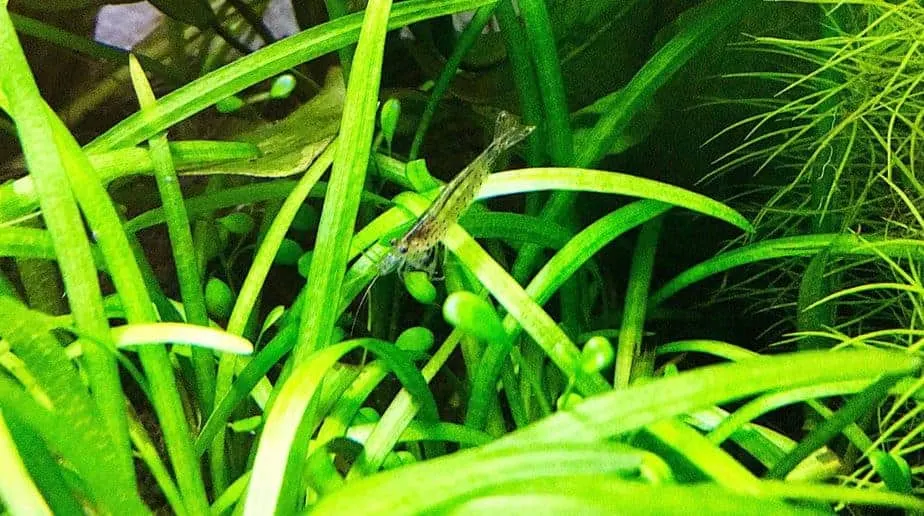
Why Aquarium Plants Turn Brown
Lovely green leaves are great to look at in an underwater environment. But if you don’t care for your plant the right way, they will start to lose their vibrancy and turn a sickly brown color.
1. Nutrient Deficiency
One possible explanation for your discolored leaves is nutrient deficiency. When your plant is missing key nutrients it can become brown and wilted. In some cases your plant will even die.
A number of micro and macronutrients could be lacking in your water. Chiefly, plants need magnesium, nitrogen, potassium, and phosphorus to survive underwater. Without these key macronutrients your plant won’t grow underwater.
A lack of these and other nutrients will result in a number of symptoms. Of course, your plant will turn brown. But some areas could even turn yellow, or black if your plant starts to rot.
For instance, too little phosphorous can cause plants to grow smaller and develop dark brown spots.
In addition, most plants do not need a ton of micronutrients, but if they don’t have them they could develop necrosis. This is a form of plant rot that turns your leaves brown and black. When a plant doesn’t have Iron you will see these effects. A lack of CO2 can also create discolored leaves.
There are many easy fixes for this problem. Really, the best way to ensure that your plant doesn’t lack nutrients is by having fertilizer in your tank. Other reasons could be causing your plant to not suck up nutrients though. But I’ll get into that later on.
2. Not Enough Light
Another common cause of brown plant leaves is improper lighting. New plant owners make the mistake of over lighting their plant. This causes wilting and browning of plants. Tank owners also make the mistake of giving their plant to little light. A lack of light will make plants brown.
Sometimes, insufficient light can even spawn brown algae on plants. This algae growth will make your water and your plant unhealthy. So again, make sure light is made available in your tank.
When you don’t give your plant the right amount of light it cannot thrive in its aquatic environment. Do your research and make sure you are providing the right level of light.
3. Not Planting Your Greenery Correctly
If you are new to aquatic plants, you want to do your research. Each plant species has its own unique requirements and planting methods. If you don’t do research on the plant you get, and end up planting it wrong its leaves will turn brown.
So make sure the water conditions are right for your plant. You want to look up what climate is right for your plant, what Ph it needs, and other relevant information.
In addition, make sure that you put the roots of your plant in right. Some flora cannot be buried deeply in the substrate. Other plants need to go deep into a substrate to properly root. If you don’t take the right measures to get your plant rooted this could affect the look of your leaves.
4. Your Tank Water Isn’t Clean Enough
This next reason is one of the most common causes of brown plants. If your tank water is not clean you cannot expect your plant to stay in good condition. Fish create all kinds of waste and pollutants in your tank water.
Of course, plants can help neutralize some of this. But if there are too many nitrates and toxins in the water column your plant won’t be able to keep up. With an excess of filth in a tank, plants start to wilt and become unhealthy.
So you want to keep your tank in good condition, not only for your plants but for your fish. In addition, make sure your water is properly treated. Trace amounts of chlorine in tap water can actually make plants turn brown. But I’ll talk more about how to keep your plant in proper water conditions in a later portion of the post.
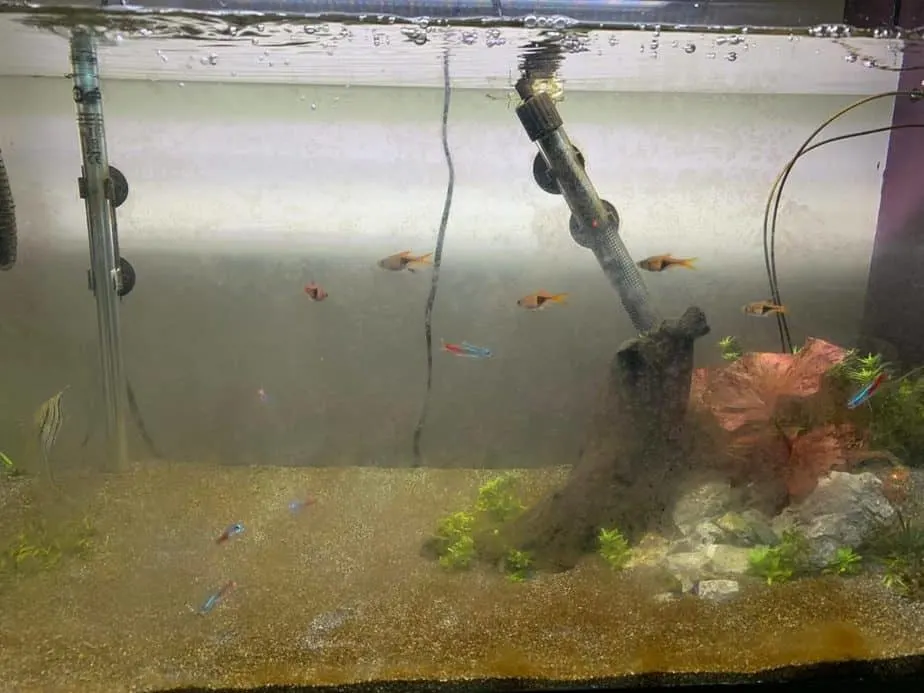
5. Your Plant Isn’t Use To Its New Environment
Sometimes, you haven’t don’t anything wrong. Your plant was put in your tank properly, it is getting enough light and nutrients, and the water conditions are good. However, plants that were grown above water might take some time to adjust to underwater conditions.
Your greenery may wilt and turn brown initially. But this is not a cause for concern. Some plants “melt” when they are first introduced to a tank. They are getting rid of the leaves that grew above water, and will eventually grow new leaves suited for your aquarium.
Just be patient and wait for them to grow back green. In this scenario, all you can do is make sure your water conditions are ideal.
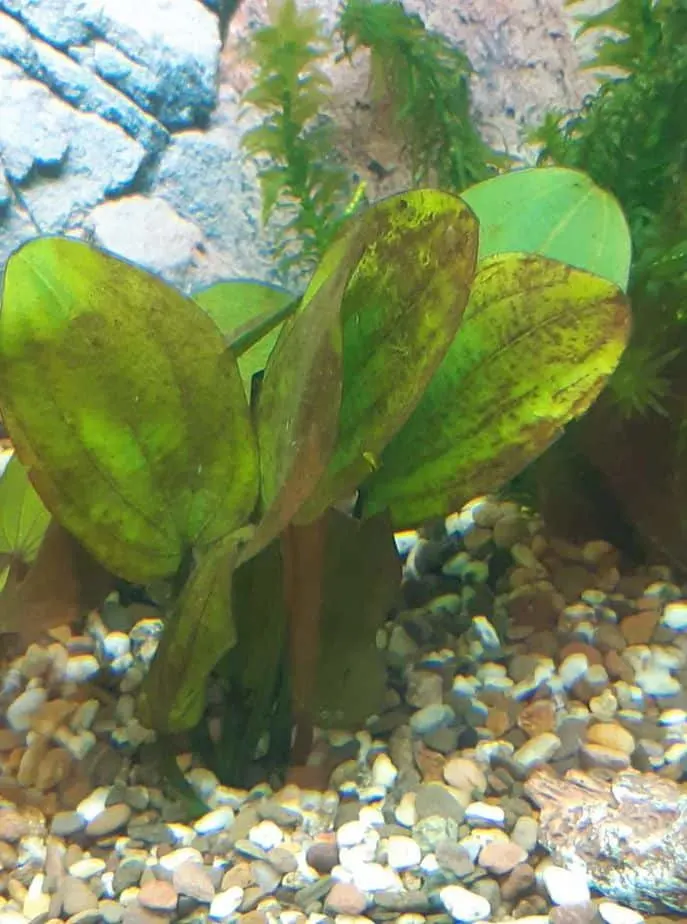
How To Turn Brown Plants Green Again
1. Make Sure You Are Planting Correctly
Some greenery is easier to plant than others. They might only need to be attached to driftwood or other aquarium objects. But if you are using a substrate, you want to ensure that you are rooting your plant correctly.
First off, make sure that your substrate isn’t clumped together. If your plant takes nutrients from its roots and the substrate is too compacted it won’t be able to feed itself. Some plants can absorb nutrients in the water column, but not every plant can. So ensure that your substrate is properly settled into your tank!
Next, as I have mentioned, do research on your plant species. You want to bury the roots of your plant correctly. Certain plants cannot be buried deeply, or cannot have certain plant parts put in a substrate. Other plants should not be put in a substrate, to begin with.
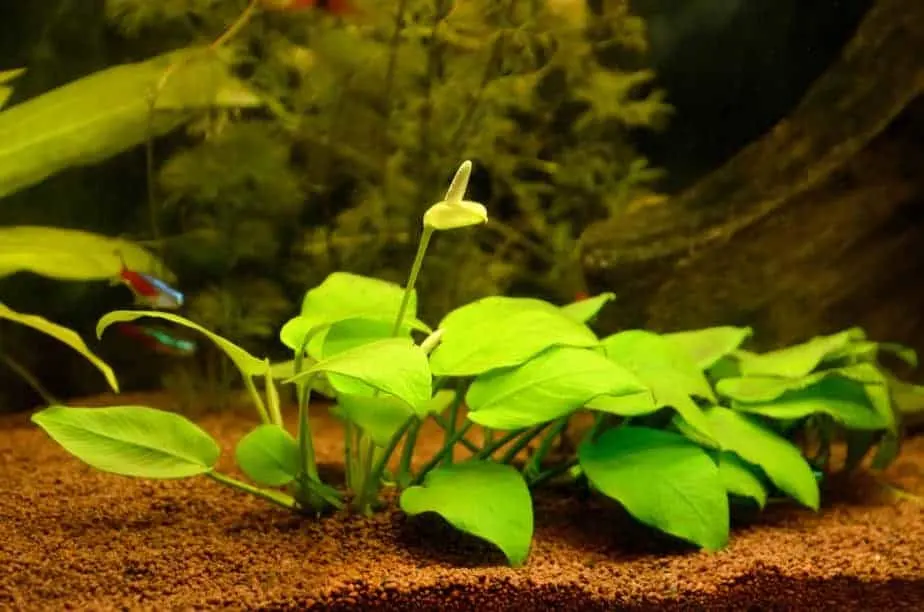
2. Check The Lighting Levels In Your Tank
Again, you want to light your plant properly. This way it can regain a healthy green hue. Plants that aren’t given enough light will wilt and die. So make sure to get a good LED system to illuminate your plant. Some tank lights aren’t strong enough for your plant.
You might even have to buy a more intense lighting setup, especially if your plant has high lighting needs. Just check online to see how much light is required for your specific plant.
Once you have the right amount of light in your tank, brown algae will stop growing on your plant. This will help return your plant leaves to a normal color.
3. Add Fertilizer or CO2 To Your Tank (Cut Back if You Are Putting in Too Much)
Some people make the mistake or not using fertilizer in their planted tank. As I mentioned previously, plants need nutrients to grow and thrive. Without key nutrients like magnesium, iron, phosphorous, and other macro and micronutrients, your plant will brown.
Fertilizer helps add these nutrients to your tank. Some plants will benefit from liquid fertilizer while others will do better with a substrate based fertilizer. You should choose a fertilizing product according to your plant type though.
However, don’t add in too much fertilizer. Plants can also turn brown when you overfertilize them. So read the instructions on the product label and put the correct amount of fertilizer in.
If your plant is still a little brown, you can try injecting CO2 or carbon dioxide into your tank. Certain plants can brown without proper levels of CO2.
Keep in mind that plants like amazon swords need calcium, zinc, copper too, and don’t forget about iron deficiency either! They need all of this and more to perform photosynthesis properly. You may want to give your aquarium plants some kind of supplement!
4. Use A Filter And Clean Your Tank
This is one of the most important steps you can take to improve the color and health of your plant. Flora needs to be in ideal water conditions to grow and look vibrant. But when you put them in dirty or contaminated water they will decay.
If you are not using a tank filter you’ll want to buy one for your aquarium. And if you already have a filter, try changing the cartridge. Forgetting to change a filter cartridge can make your tank dirtier. You want ammonia and other toxins to lower in your tank.
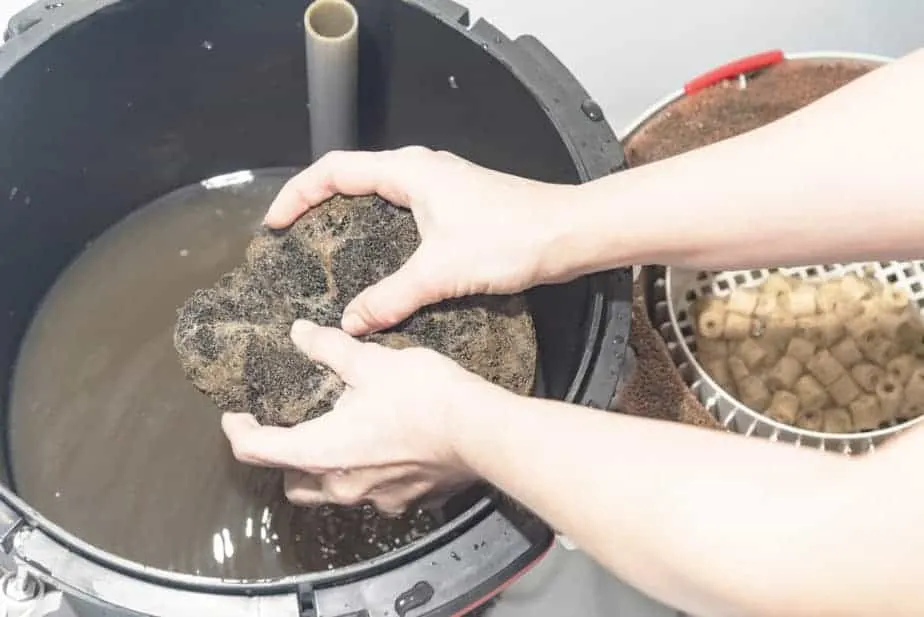
In addition, check for any floating waste and remove it. Decaying material can dirty your water and raise nitrate levels. There might be waste hiding in the crevices of your substrate so clean your gravel with a vacuum as well.
Regularly cleaning your tank can keep your plants in optimal health. This doesn’t involve a lot of work. Just use a gravel vacuum a few times a week, wipe down the glass of your tank, and take out any floating debris when you see it!
5. Adjust The Water Conditions of Your Tank
If your water is clean enough for your plant, then try and adjust water conditions. The climate of your tank could be off. Or maybe the Ph is not at the right level. If this is the case, you will want to change these conditions to suit your plant.
Plants are pretty finicky, and if they are in the wrong kind of environment they will die. If your tank conditions are fluctuating wildly this could also cause plant browning.
The best way to combat this issue is to use aquarium devices. A heating device will keep the climate in your tank constant. Filters will keep ammonia and nitrate under control.
Some plants need warmer waters to survive, so consider this if you see your plant turning brown. But if the temperature is right in your tank, then adjust the Ph of your tank. There are many aquarium products that can help you with this!
5. Make Sure Your Tank Devices Are Working
Sometimes your plant can turn brown if your tank devices are not working. You want to have the best products in your tank so this does not happen. Cheaper aquarium equipment can lead to faulty functioning.
A filter that is not working the way it should will impact the health of your plant. So make sure your filter and other devices are in working condition. When tank devices stop working they change your tank setup. This will lead to poor plant growth.
Devices should be plugged in, working right, and of the best possible quality. You need to invest in your plants if you want them to get better again!
6. Do A Water Change
If all else fails, try performing a water change. Taking out some of your tank water can solve many of the problems I mentioned in the previous sections. You can reduce waste levels and get rid of contaminants that are turning your plant brown.
Water changes also help planted tanks that have been overfertilized. You can reduce excess amounts of fertilizer and phosphate, and get your plants back to normal when you perform a water change.
Really, you want to be changing your water regularly though. Most tanks should have a twenty-five percent water change every week or two.
But if you haven’t changed your tank water in a while, try changing more of the water to get rid of excess filth and waste material. Just remember to not change too much water at once, as this is one of the main reasons for the destruction of the nitrogen cycle, which can result in high phosphate levels and nitrite levels, and ultimately in brown algae growth.
My favorite fishtank products that make life easier
I am so happy you enjoy this post so far! You will also definitely like my product recommendations that will make your fishkeeping experience so much better. I’m 100% sure you’ll love them!
- Without a gravel vacuum, like one from Aqueon, cleaning the substrate of your tanks is near impossible. Whenever I want to remove some of the sunken detritus from the bottom of my acrylic tanks I’m happy I’ve got one of these.
- It’s no secret that I do not like nutritious aqua-soil. It makes a mess and only works for a given amount of time. Instead, I always use a liquid aquarium plant fertilizer. Everyone who keeps live plants needs it, it’s not that expensive and makes your plants grow better.
- I love keeping plants, but planting and reorganizing my aquarium was difficult until I got a set of these tools. It’s much easier to plant any kind of plant compared to using my thick fingers.
- Ever since I’m able to accurately test my water parameters, including the pH level, keeping fish became less stressful. Before I was always stressed that my water parameters were wrong, but with a kit such as the API Master kit, I can measure this. It really is essential to successful fishkeeping.
- The more you know about your aquarium, the better! Temperature is crucial for the health of your fish. A thermometer will also show you whether your heaters are still working correctly. It will give you more insight and more peace of mind. It’s an easy way to ensure that you’re providing your fish with the tropical temperatures they need.

